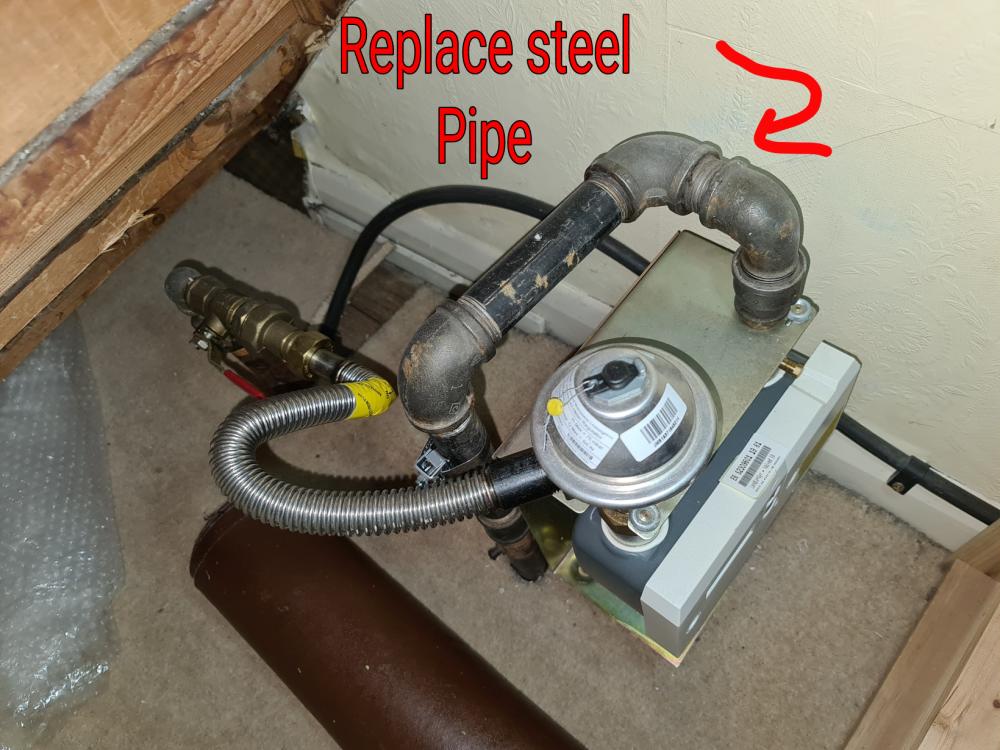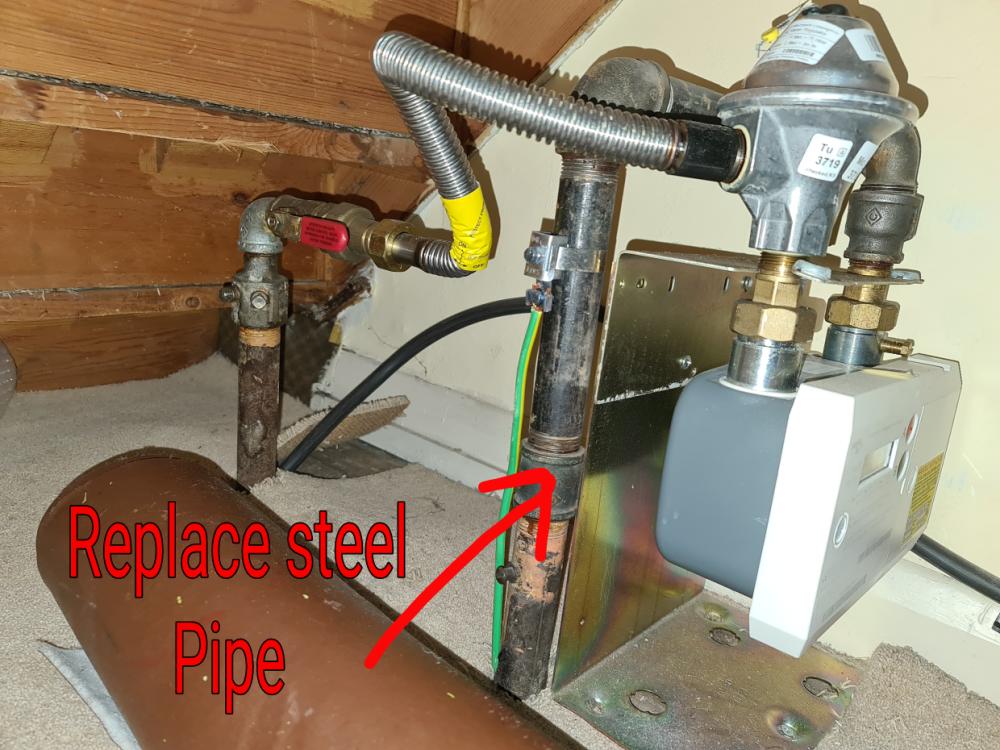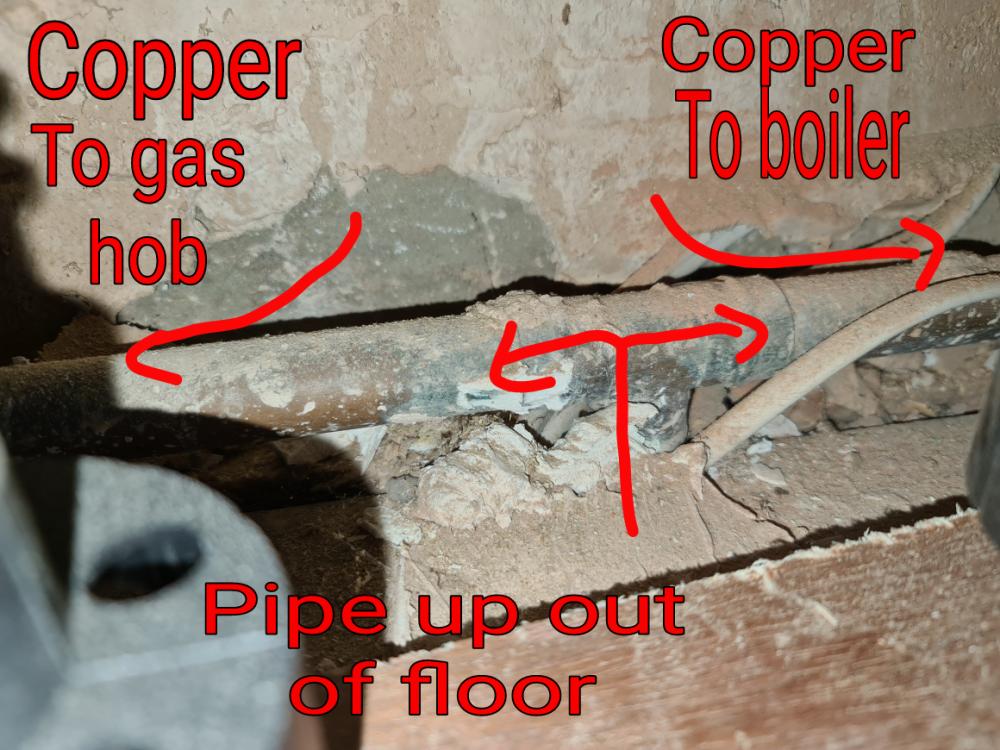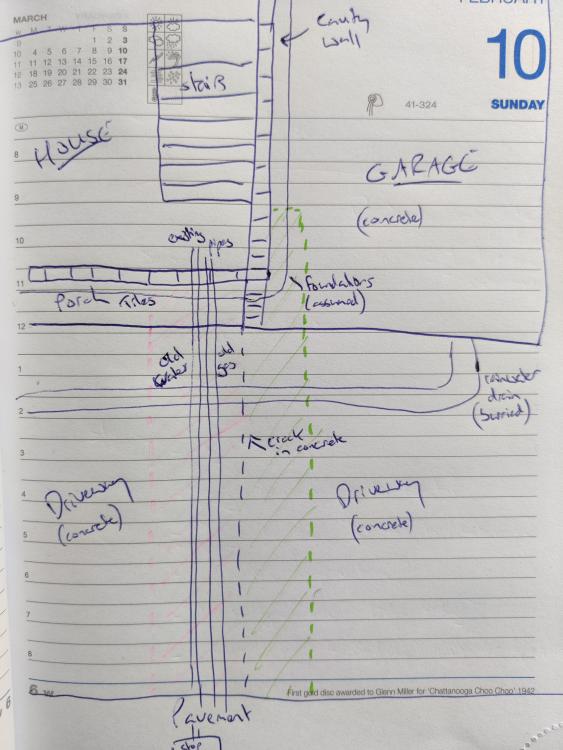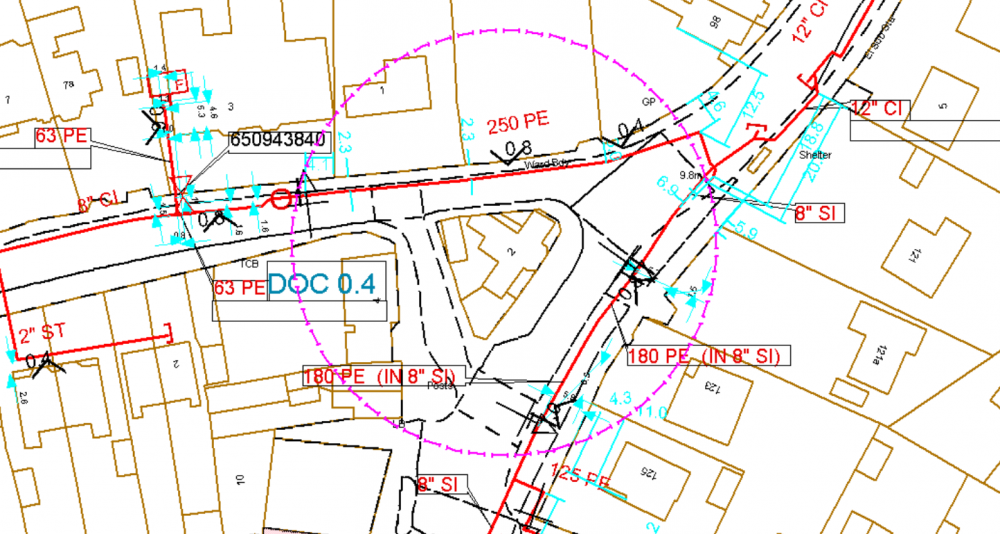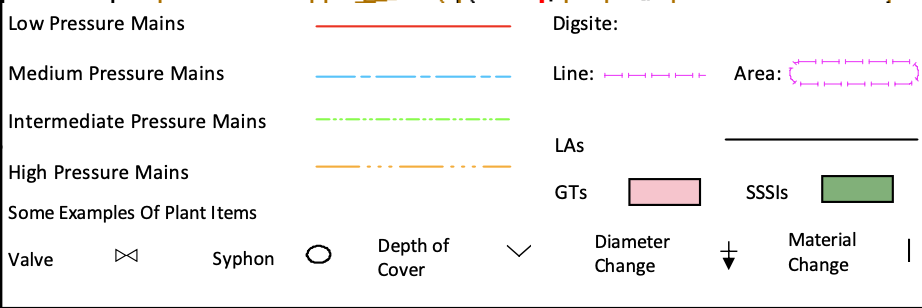Search the Community
Showing results for tags 'gas'.
-
Hello. Our gas boiler insurer no longer covers our terraced home heating system because the gas pipe running from our meter to the kitchen is steel. It runs under our wooden ground floor and its length is about 15 feet with another couple of feet for the angled bits around the meter. Would having this steel pipework replaced with copper be very expensive? Our house is a 1930s terraced build. Please see the pictures. The last picture shows the gas pioework where it enters the kitchen and splits to the gas hob and the boiler. We have an option not to replace the pipe and get insurance with another insurer who dosent exclude steel pipework. The difference between the 2 insurers policies is £170 and £565. Any thoughts are very welcome. Thanks David
- 24 replies
-
Recently our boiler was broken. Whilst we awaited it being fixed we were using two gas fires we hardly ever use. One of them has a pilot light which I leave turned off as it is rarely used, but turned on at this point. I looked at my Octopus app and saw we were using gas. I was surprised as the boiler was broken and thought that there was something wrong. Then I remembered the pilot light. It appears that the pilot light used around 3.5kWh of gas a day. That is 1300kWh a year or around £90 a year in gas. It is pretty small compared to our gas bill, but would be equivalent to 10% of the assumed gas usage in the price cap calculation. Boiler is fixed and the pilot light is turned off. So I am not wasting 3kWh a day, justing using 300!
-
Hi, Moved into a 1930s semi property with lead water pipes and an old capped gas line. As such planning to dig a new trench and lay a new MDPE water pipe to the correct specifications, then once signed off backfill this and get the gas company to lay the gas line in the same trench. My question is, where in the picture would you advise digging the trench? Either way it's through a concrete driveway and will pass under a rainwater drain. Itll either enter the property though a small porch or through the garage. One option is to expose the current pipes but that'll impede digging and I'm not sure if you can cut though and remove the old gas pipe even though I'm told it's "dead" and been turned off. I'm hoping at 75cm depth I'll be able to pass under the foundations and not need to drill through it. Failing that I wonder if I could come up higher once in the porch or garage and just knock out a brick or two to get into the house. I'm assuming this would be okay as long as it's insulated. Any advice appreciated! Jack
-
Question Do you use less gas heating cylinder to produce DHW or direct from a combi gas boiler? My thoughts are - A combi will start up quite a few times and have a short run times, worst efficiency. Filling a cylinder will be longer run time, so should be more efficient. But I am not sure, what are your thoughts?
- 16 replies
-
- dhw ( domestic hot water )
- gas
-
(and 2 more)
Tagged with:
-
Hi everyone I’d welcome your thoughts please, especially on heating. Wanted to reach out to you all as I’m finding it’s tough to get unbiased advice and personal experience. We’re just about to start a renovation and extension project to a bungalow. The existing building is a time capsule from 1979 with a stunning avocado bathroom suite so we need to do the works: heating, ventilation, electrics, skimming, new flooring etc. So we have a blank canvas. We’re trying to work out the classic air source heat pump vs gas, and UFH vs radiators conundrum. The existing property is 60m2 with a concrete floor (the very fashionable original self-adhesive tiles are below an equally fashionable retro carpet). Ceiling height is c.2.3m. We need to plasterboard the ceilings before skimming, so are losing a touch of height there. The extension will be 30m2. Attic insulation is going to be increased, there’s cavity wall insulation, and we’ll be putting in new windows. We’re looking at installing MVHR. The existing property’s radiators need replacing anyway and the pipes are all currently mounted on the walls, so if we went for rads here it would be a big job including all the pipework chased through the walls, etc. Even if we couldn’t afford a heat pump now, we’d want to make it as ‘heat pump ready’ for the future as possible by using low flow temp rads, etc. Because of the expense of this scenario, we wonder the actual cost difference with the alternative, which is a low-profile retrofit UFH system? I’ve been researching and awaiting quotes - I’ve heard back so far from Nu-Heat for their LowPro Max. I’m concerned with appropriateness for the existing building, cost, additional lost ceiling depth (although I’m pretty short!), and if there’s a building regs issue with presumably having no insulation with the original concrete floor. We’d like to do UFH in the 30m2 extension and have been quoted so far for Nu-Heat’s relevant system. The grant from April closes the financial gap between a heat pump and a new gas boiler, as if we went for old school gas there would be extra costs to replace the ancient combi as well as moving the gas supply (crazy money!), required to accommodate the new floor plan. So as there would be a relatively minor jump in cost to a heat pump, we’re wondering if the time is right now? And if so, how this would influence the choice of UFH vs rads in the existing part of the house? Would really appreciate your ideas, observations and experience. Big thanks
- 12 replies
-
- air source heat pump
- gas
-
(and 8 more)
Tagged with:
-
Planning a very minor trench excavation to bring in a new gas supply and water main. I've got the safe dig plan from my gas network SGN and looks fine for where I want to dig but just curious what some of the symbols which are not included in their key mean. Assuming 250 PE means a 250mm Polyethylene pipe? So what are 8" SI, 125 FF etc? What about the speech bubble "650943840"? Their key:
-
Hi Folks, Nearing the stage of starting and another question has popped into my head! So we will have a duel fuel rangemaster cooker in our kitchen (electric, gas hob), to which the gas will come from gas cylinders (47kg Propane). Now our cooker is located at the front of the house and the last thing we want is the cylinders outside at the front! What would be involved to get the gas pipe to the back of the house, this would be approximately 12m in distance. Would we have to incorporate a duct into the foundation slab to carry this pipe from the kitchen? If so i would hate to forget and be left with horrible cylinders at the front of the house! ?
-
Hi. Firstly, not sure this is the correct place to post... never seen so many sub-forums in my life.... We're building a 245m2 passive(ish) house this year. South facing, plenty of solar gain when need (bris soleil and external blinds to minimise when not wanted). https://forum.buildhub.org.uk/topic/9228-hi-icf-project-in-holywood/ We're in a town and on mains gas, so it seems by far the most logical source of energy for heating and hot water. As much as I want to de-carbonise, a heat pump doesn't make sense in our case. So, that part is sorted. As we'll have triple glazing, ICF walls, large thermal mass, high air tightness, our energy demand will be low. I don't see the point in spending thousands installing a central heating system. Plus we'll have a wood burner - will be rarely used, so not fussed if there's a back boiler on it. Our initial PHPP assessment attached. I'm thinking plumbed towel rads in wet rooms and maybe 2kw post heaters (3x 150mm - one for each level - each with own control e.g. central warm water heater) Any issues with the above? Would also consider electric under tile heating mats for the master en-suite for my other half's chronically cold feet... My main query is hot water.... there's just the two of us and we both travel a lot for work so we've no regular routine. We have a combi boiler in our house which is great.... but hate the long delay for hot water to come out of the tap and the massive pressure and flow drops when somebody else flushes a toilet or turns on a tap. So I'm ruling that out. I'm also planning on a 3-4KW PV system with solar diverter to provide hot water in the summer... so that means some sort of storage. What are my options? In summary, we need instant DHW on demand, high flow rates, low running cost, heatable by gas and PV. Thernal store, unvented HW cylinder or sunamp type storage? Really unsure!!! Thanks
-
I have a feeling I'm being taken for a ride. The chap we've used for around 15 years or so to service our boiler retired a year or so ago, and now the house is up for sale I've been advised that I need to provide evidence of an up-to-date service, which is fair enough. I've witnessed every service on this boiler, and on average it's taken under an hour, and has essentially been a visual inspection inside the boiler, a flue gas check, gas pressure check and a quick test to make sure the controls are working. If asked the chap would also have checked and cleaned the Magnaclean and topped up the inhibitor, but I usually do that every year anyway, so that's never been included. I can't remember what we used to pay, but I'm pretty sure it was well under £100. I asked around last week to try and find someone to come out and do a service and check, and those that have come back so far are looking for well North of £200. I reckon this is OTT, but maybe I've just been getting a good deal from the chap I've been using for years. The boiler in question is a wall mounted and easy to access Vaillant EcoTec Plus 831, with just a single wired programmable thermostat. Everything is easy to access, and nothing needs to be moved to get at either the boiler or the Magnaclean, which is mounted on the wall next to it. Am I just out of touch with boiler servicing costs?
-
Well with the trench blocks in its time to sort out my services and stuff for drainage and waste i basically COPIED the paths from an identical house but as I am doing the pipework and paths myself (as much as i can anyway) I wouldn't mind a bit of the usual good advice from the sages on here ! In your guys (or girls) honest opinion 1. does the waste and rainwater make sense ? ....do you think i need to add anymore feeds for RW at the top left? 2. The services (sadly) enter the house on the wrong side (see blue arrow) ...I have to get virtually EVERYTHING to the Blue cross as this trench carries it all 30m to the road Sewage, Water, Electric, Gas and Telecoms (too possibly) How would you lot do it ? ..as in what way? I have some pics below that could help you visualise it a) planned water paths b) roofscape ( the bit on the right is a single storey sunroom c) example of identical house built a few years ago any advice is appreciated
-
Has anyone had the issue of having to divert a gas main for the foundations and idea of costs? The contractor is 3/4 through the foundations and discovered a steel pipe. The initial inspection points to it being an old gas pipe that has since had plastic fed through it. We now await follow up inspection, then can apply for a quote to divert. We checked prior to building the location maps it looks like the network drawings are slightly out. It should be under a flagged footpath the same as all the other utilities, we can only think that many years ago it was decided lower cost to put under what was softer ground compared to taking up old flagstones. Disappointed that not only has worked stopped for an unknown period we will get hit with the extra costs to divert despite carrying out all relevant checks. Anyone ideas on pricing per metre or how the process works in terms of time would appreciate comments, online I can only find prices for meter diversions. ? I couldn't find any other information on this forum so think its another potential hidden pitfall to be aware of for future self-builders, we were grateful it wasn't damaged.
-
The caravan is here! My question is do we need an LPG registered gas engineer to connect up to the two 47kg LPG units? And what about when we need to change them? Or can we do this ourselves (the pigtails are already on the end of the caravan and the boiler has been serviced before we got it). For interest, the shed (ex-playhouse) to the right hand side is the outside toilet cum laundry. Fitting it out has kept him indoors happily occupied for a good couple of weekends.....
-
Our current house is a cool, drafty colander. And to finance Salamander Cottage, we need to sell the colander. [The sublime built next to the ridiculous] So I'm putting Repair-and-Replace plan together. Trying hard not to look at the cost. Done my due diligence , thanks @Ferdinand, @Onoff, @JSHarris , @Crofter , @TerryE and others. EPC for the current house is likely to be X, Y or probably Z. To top it all off, the main heating system is a multi-fuel stove that enchants everyone who comes in and settles down on the sofa. Heats all the hot water, a good few rads and a cat. Bless it, the fire needs daily maintenance and has never yet performed well when there's a blocking high-pressure system. We'll never sell with the current set up. So out with the old and in with the new. E7; never get our money back. Oil; just don't like it. Illogical? Maybe, but that's it. That leaves LPG. Calor are fitting tanks free. Salamander cottage is 20 meters away. Any reason I shouldn't use Calor for both properties? Too simple?
- 32 replies
-
I looked into the technology being used and the data collection and security, some time ago (probably around 4 or 5 years ago now, when the first "smart" meters were being rolled out. There are a stack of issues with them, even though the intention is partly good. The major one hitting consumers right now is that each supplier came up with their own implementation, so when you change suppliers (as we're all encouraged to do to maintain competition in the market) then the meter needs to be changed as well, or you just lose the "smart" meter "advantages". The more serious flaws were that the entire system, from the meter data link to the storage of data by the suppliers and intermediaries, was open to malicious attack. In fact the protocol was so insecure that it was laughable, with virtually no security provisions at all at the meter end. Whether consumers would have trust in the data collection end, run by the suppliers is open to question. Right now there's no significant problem there, apart from the frequent "computer errors" that seem to effect the billing part of the systems some suppliers use. With the advent of control of meters and supplies by the suppliers, using their systems, there comes a whole new set of security issues that some could choose to exploit to there advantage (anything from crooks fiddling usage data to malicious interference with supply control). The annoying thing is it wouldn't have been at all difficult to make smart metering effective and secure. Adding hardware encryption to the data link would have been easy, cheap and effective. Making the metering systems all work to a common standard, with rigid controls to ensure interoperability between suppliers would have been easy, and not added significantly, if at all, to the cost. Focussing on effective incentives, rather than replicating existing energy usage displays and hoping that will change behaviour (for most it won't, as has been shown) might have given real benefits. For example, EDF in France charge different prices for electricity to all domestic consumers depending on their forecast load. It's not smart metering, it relies on radio, TV and internet warnings of the days/times when prices will be high. We have friends who lived in France for years, and they would always watch out for the price changes and plan their usage pattern to avoid using things like the washing machine during high price periods. From what I gathered from talking to them, this was commonplace; lots of consumers were used to just adjusting things around the varying energy price. Smart meters would have allowed that easily, and a simple display showing the consumer the current price and usage, with a short calendar of forecast prices over the next few days, would almost certainly start to do the same as what has been happening in France for some time (I think the reason for doing it in France had lot to do with their shortage of short-term fast ramp-up generation; they use a lot of very slow to respond nuclear plants). The real nail in the coffin seems to be that widespread roll out of smart meters in other countries hasn't resulted in any saving, if anything it's produced the opposite effect!
- 10 replies
-
- smart meters
- security
-
(and 5 more)
Tagged with:
-
Excerpt from a previous thread. A member asked..... Following on from discussions regarding the desirability and availabilty of low output room sealed wood burners I have been looking at the alternatives. I need something that will satisfy our desire to have a "real fire" while at the same time having a controllable output of around about 2kW. Has anyone looked at using bioethanol burners as a compromise solution in this situation ? Do I need to make any special allowances for flue-less fires in the house or should a standard MVHR system be able to cope ? Are there any building regs to consider ?
- 5 replies
-
- 1
-

-
- bio ethanol
- gas
-
(and 6 more)
Tagged with:

